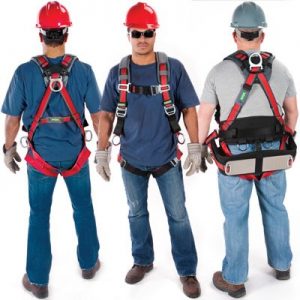Grain storage is a critical component of the agricultural industry, ensuring a steady and reliable food supply. However, the challenge lies in maintaining the quality of stored grains over time. One essential practice that plays a pivotal role in grain storage management is fumigation. In this blog post, we will delve into the significance of fumigation in preserving grain quality, mitigating risks, and ensuring a sustainable food production system.
The Importance of Fumigation:
Fumigation is the process of using chemicals to eliminate or control pests, insects, and pathogens that can jeopardize the integrity of stored grains. This practice is crucial for preventing post-harvest losses and maintaining the nutritional value of grains. Farmers and grain storage facility managers often resort to fumigation as an effective means to protect their investment and ensure a reliable food supply chain.
Fumigation for Pest Control:
Pests pose a significant threat to stored grains, causing both quantitative and qualitative losses. Insects, rodents, and molds can proliferate in grain bins, leading to spoilage and contamination. Fumigation acts as a powerful tool to combat these pests. The use of fumigants effectively eliminates pests at various life stages, ensuring comprehensive protection for the stored grains.
Addressing Risks in Fumigation:
While fumigation is a valuable practice, it comes with inherent risks. The chemicals used in the process can be hazardous to human health and the environment if not handled with care. Therefore, it is imperative for farmers and storage facility operators to adhere to strict safety protocols and guidelines when employing fumigation methods.
Proper Ventilation and Monitoring:
To mitigate risks associated with fumigation, proper ventilation is key. Adequate airflow within the grain bin helps in dispersing fumigants and reducing the concentration of harmful chemicals. Monitoring equipment, such as gas detectors, should be utilized to ensure that fumigation is conducted within safe parameters. Regular checks and assessments during and after the fumigation process are essential to guarantee a secure storage environment.
Fumigation Best Practices:
Implementing best practices in fumigation is vital for its effectiveness and safety. Firstly, it is crucial to choose the right fumigant based on the type of pest and grain being stored. Secondly, following recommended dosage and application methods is essential to achieve optimal results. Additionally, scheduling fumigation during periods of low temperature can enhance its efficacy, as some pests are more vulnerable in cooler conditions.
The Role of Technology in Fumigation:
Advancements in technology have contributed to safer and more efficient fumigation practices. Automated fumigation systems equipped with sensors and controls allow for precise application of fumigants, reducing the risk of human error. Integrated pest management (IPM) strategies, incorporating biological controls alongside fumigation, further enhance the sustainability of grain storage practices.
In conclusion, fumigation is a critical aspect of grain bin management, playing a pivotal role in pest control and preserving the quality of stored grains. While the risks associated with fumigation are undeniable, adherence to safety protocols, proper ventilation, and technological advancements contribute to mitigating these risks. By understanding the importance of fumigation and implementing best practices, farmers and storage facility operators can ensure a sustainable and reliable food supply chain. Fumigation stands as a testament to the agriculture industry’s commitment to innovation and responsible grain management.





